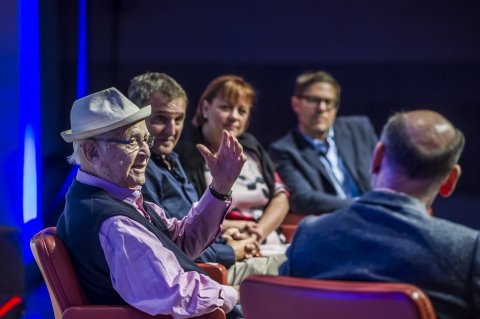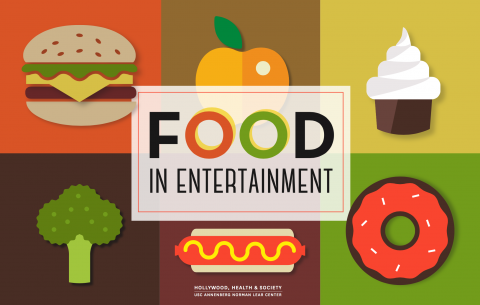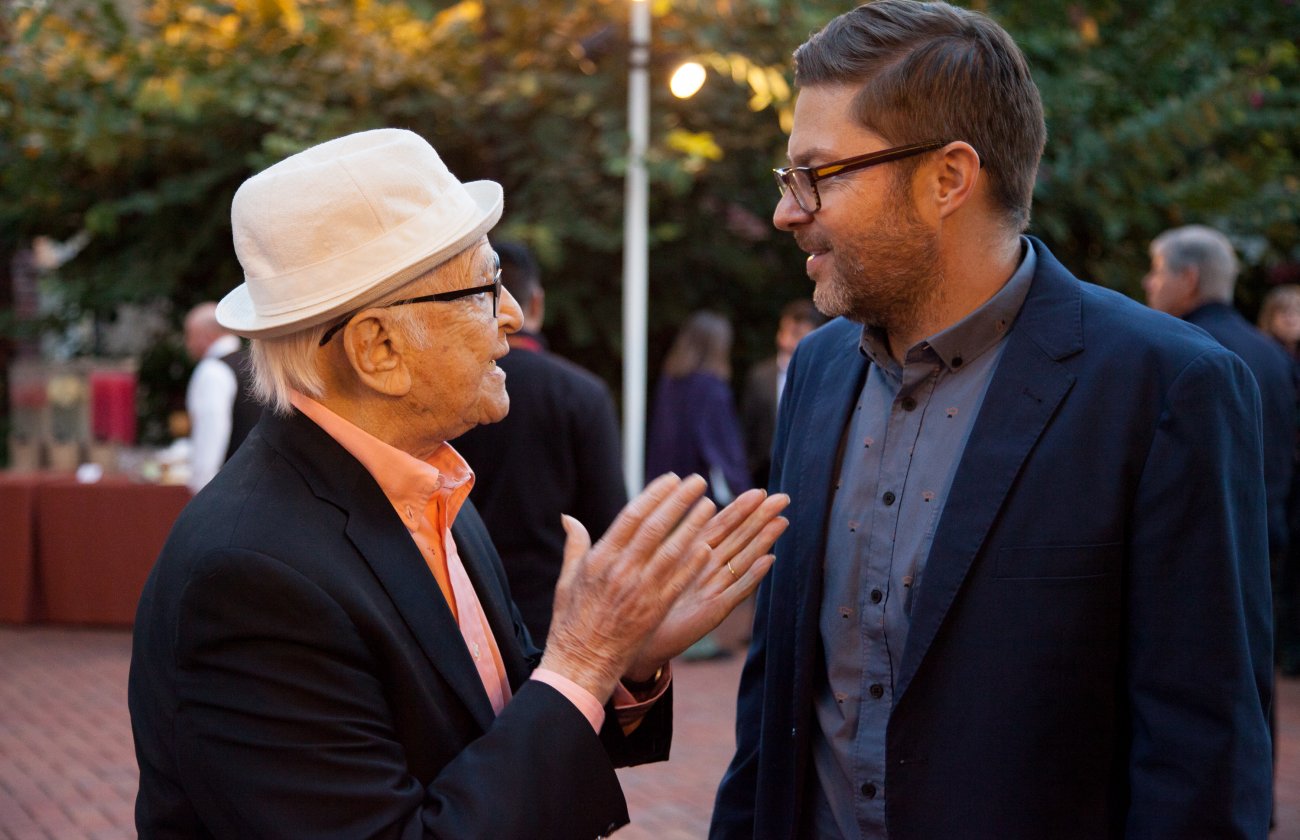
The findings, from the USC Annenberg School’s Norman Lear Center, were previewed by Center director Martin Kaplan at Hollywood and Dine: The Image and Impact of Food in Entertainment, a USA Pavilion symposium featuring legendary writer, producer and director Norman Lear; Phil Rosenthal, creator of Everybody Loves Raymond and the new PBS food and travel series I’ll Have What Phil’s Having; music scholar, food historian and USC professor Josh Kun; and renowned Los Angeles chef and James Beard Award winner Sherry Yard. U.S. Ambassador to Italy John R. Phillips, international cinema star Maria Grazia Cucinotta, an Ambassador for Expo Milano 2015, and Geoffrey Cowan, president of The Annenberg Foundation Trust at Sunnylands, opened the event.
The research, conducted by the Lear Center’s Hollywood, Health & Society program, comes from a content analysis of more than 1,300 episodes of the most-watched American TV shows over a 10-year period. It found that food was depicted in about eight out of 10 primetime episodes. Fruits and vegetables were shown onscreen as frequently as cookies, ice cream and other sugary foods. But when researchers analyzed the food that characters were shown eating, desserts were consumed more often than healthy food. In comedies, sugary food was eaten nearly two-and-a-half times more often than fruits and vegetables.

Researchers also assessed the impact of so-called “fake news” on audiences. In a 1,600 person sample, one group watched a segment of The Daily Show with Jon Stewart about the food industry’s conflicting messages about nutrition. Others viewed a video or a print news story with the same information, but without the satire. Compared with those who saw the straight video or print stories, initial findings indicate that viewers of the Daily Show story remembered more information; became more cynical about the food industry, but were more optimistic about changing it; and a month later were eating more fruits and vegetables.
Hollywood, Health and Society research specialist Erica Rosenthal led the studies, along with Kaplan, Lear Center project administrator Adam Amel Rogers and HH&S program director Kate Langrall Folb.
For more information about the findings, go to www.usc.edu/hhs.







